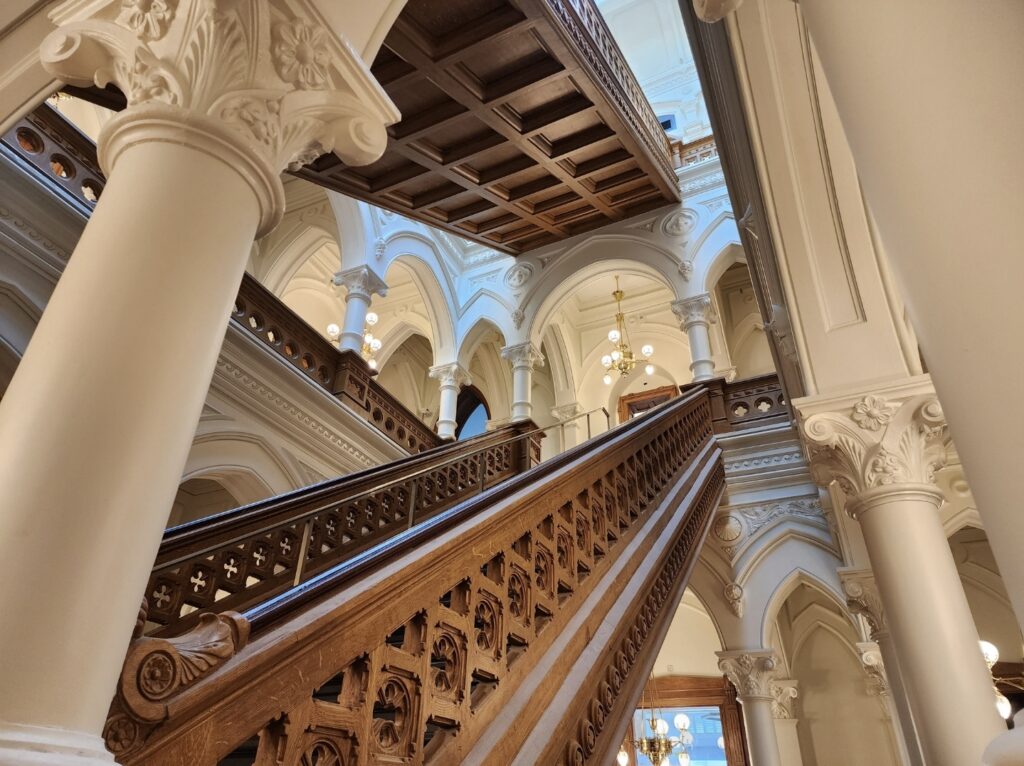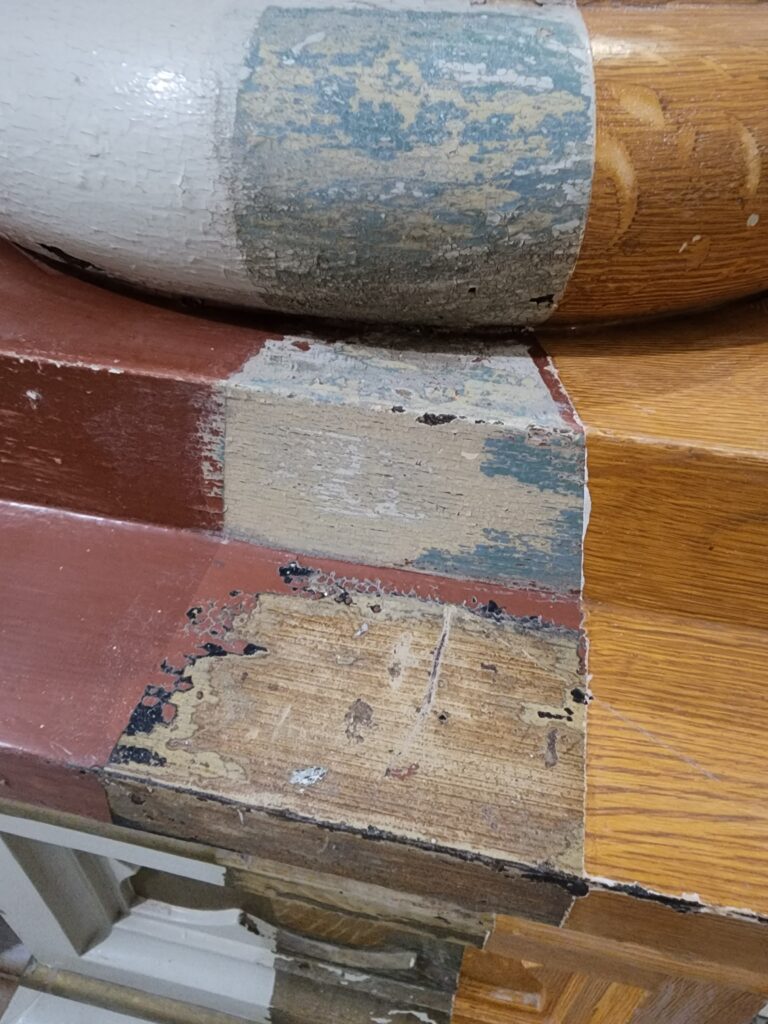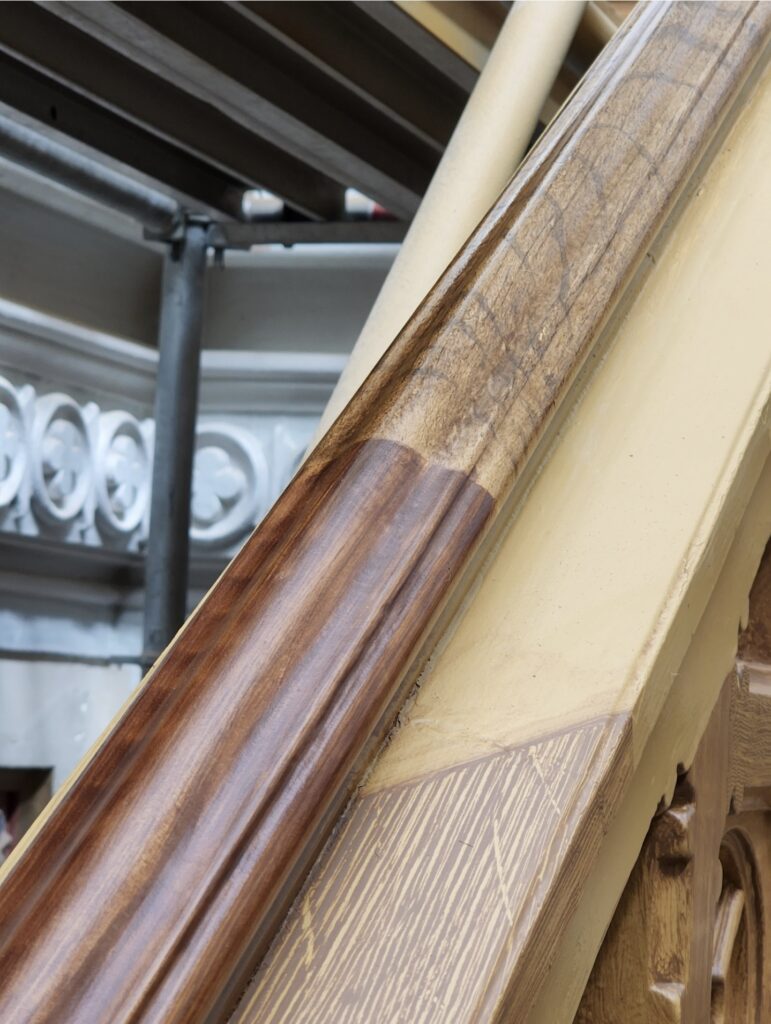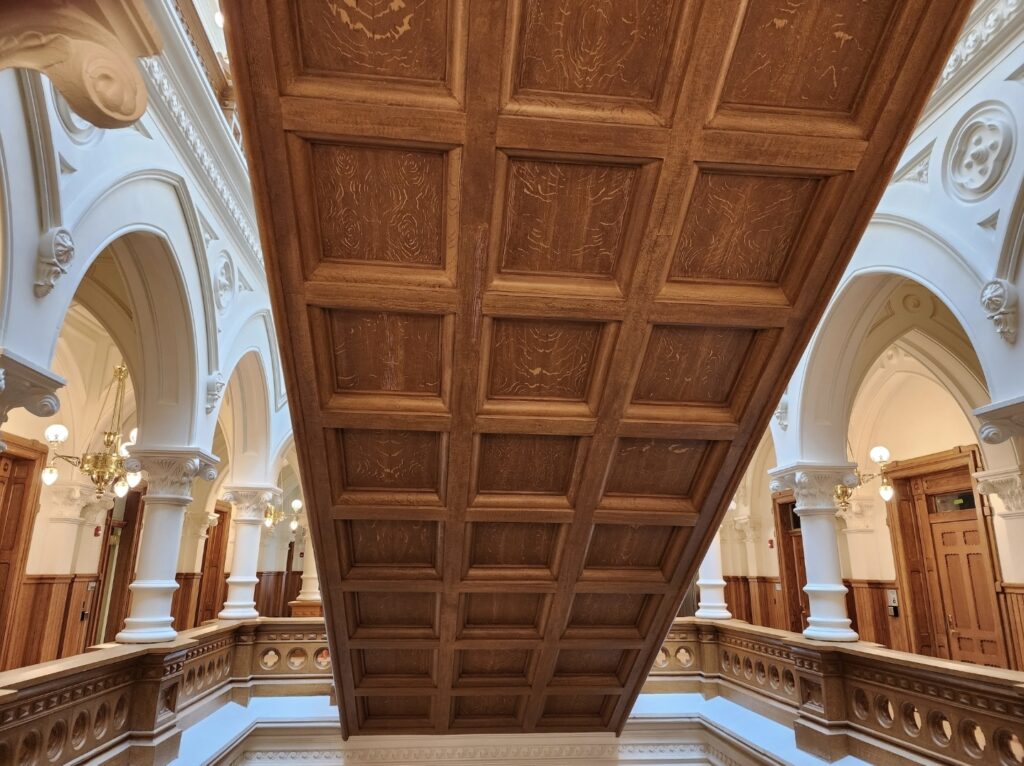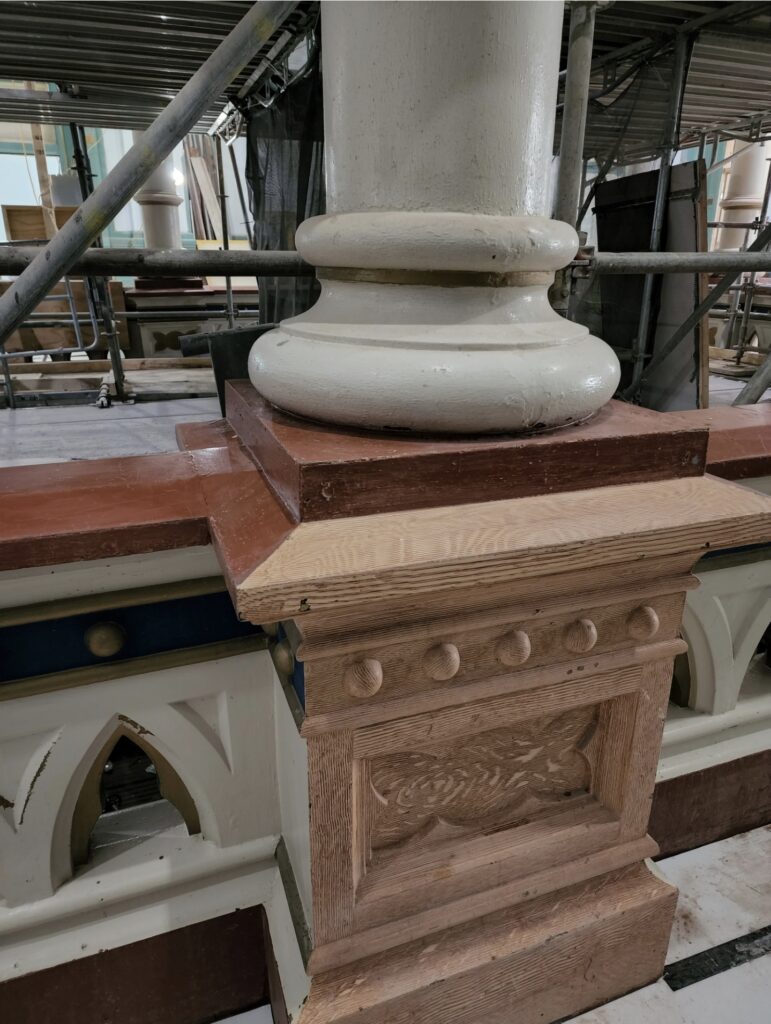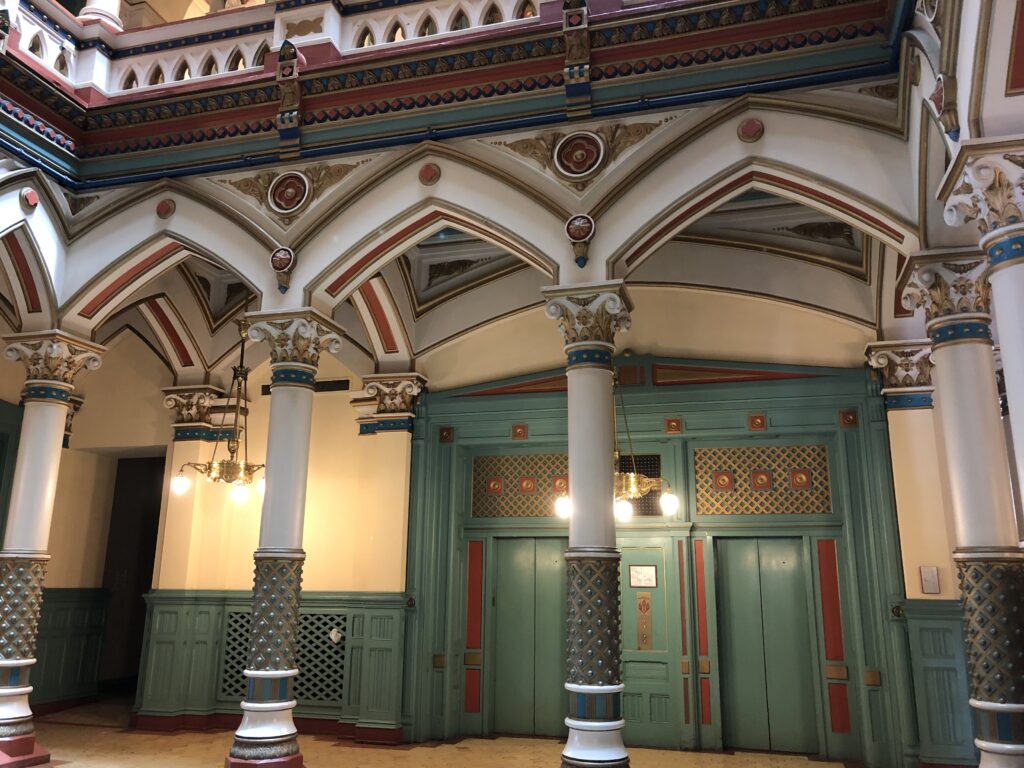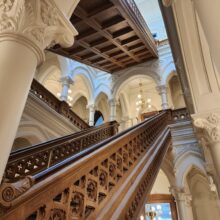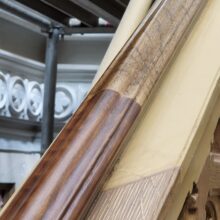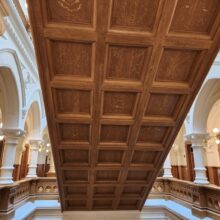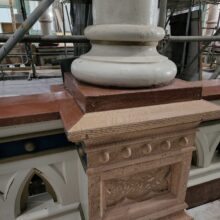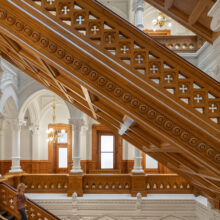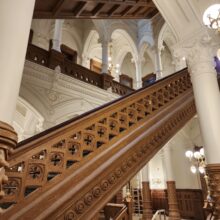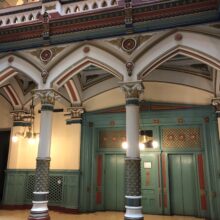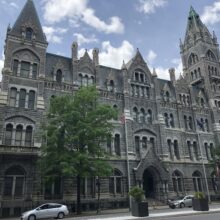Old City Hall
Old City Hall, known formerly as City Hall, is the former city hall of Richmond, Virginia that was designed by Elijah E. Myers. It served as City Hall from its completion in 1894 through the 1970s. The building occupies its own city block in downtown Richmond, bounded by 10th and 11th Streets to the west and east, and Capitol Street and East Broad Street to the south. The building is executed in a meticulous Gothic Revival style, and was designated a National Historic Landmark for its architecture.
EverGreene performed restoration on some of the plaster and wood elements, as well as restore some of the decorative finishes. EverGreene staff were contracted to remove failed plaster; repair deteriorated lath as necessary; install replacement plaster; mold, recast, and install decorative plaster elements as specified. Staff were also contracted to remove post-historic paint on specific wood elements, perform any necessary prep, and apply stains and protective finishing coats.
Additionally, our craftspeople worked to instate a decorative wood grain finish on cast iron elements where specified. Our team worked to faithfully recreate the original woodgraining revealed through exposure windows. Special care was taken to ensure the wood graining’s appearance was in harmony with the adjacent wood oak paneling found on adjacent surfaces.
The metal substrates were repaired as needed prior to the execution of woodgraining. The woodgraining process was as followed:
- The metal substrates were initially treated with a tinted primer to prepare for the application of a base coat.
- A color matched base coat was applied by sprayer to provide the foundation for the woodgraining.
- Each section of ornament or paneling would then be marked out for individual treatment to ensure they matched the appearance of carpentry techniques.
- A tinted darker glaze would be applied and allowed to briefly set.
- A variety of rubber and steel graining combs were dragged through the glaze to create the cartoon. Sometimes it would be dragged through at a slight angle and brought back at a different to create a shimmer effect.
- Sections of panels were often wiped out with an eraser or cloth to create a quartered look to match the characteristics of the adjacent wood oak paneling.
- After the woodgraining dried it was clear coated with a satin finish for protection.

